
Welcome to Block 2019! We’re exploring classic quilt blocks all year, and the eleventh block is Orange Peel. Part of the challenge of Block 2019 is to try different techniques and construction methods to grow and hone our skills as quilters. This month’s block has three construction methods to choose from.
Fabric Requirements:
Gray (Includes quilt-as-you-go backing) — 3/8 yard
Aqua — 1/8 yard
Dark Blue — 1/8 yard
Coral — 1/8 yard
Batting — 12″ x 12″ (For quilt-as-you-go method only)
Cutting Instructions:
See the method instructions for specific instructions suited to each method.
Method 1: Patchwork
Measure the 1″ square to ensure the page printed the correct size. Create durable templates from the Patchwork printable.
On the wrong side of the fabric, trace the template, and then cut out the pieces.
Trace the following using the templates:
Gray:
(32) 3 1/2″ x 3 1/2″ – B
Aqua:
(4) 3 3/4″ x 3 3/4″ – A
Dark Teal:
(8) 3 3/4″ x 3 3/4″ – A
Coral:
(4) 3 3/4″ x 3 3/4″ – A
Block Construction
This method required curved piecing. Below are curved piecing instructions. The photos show curved piecing on a Quarter Circle, but the technique is the same.
Press the concave shapes in half, right sides together. Press the convex shapes in half, wrong sides together.

Place a convex piece on top of a concave piece, right sides together, matching the center creases. Pin the center in place.

Gently bend the concave shape to match the corner of the convex shape and pin. Repeat on the other corner.
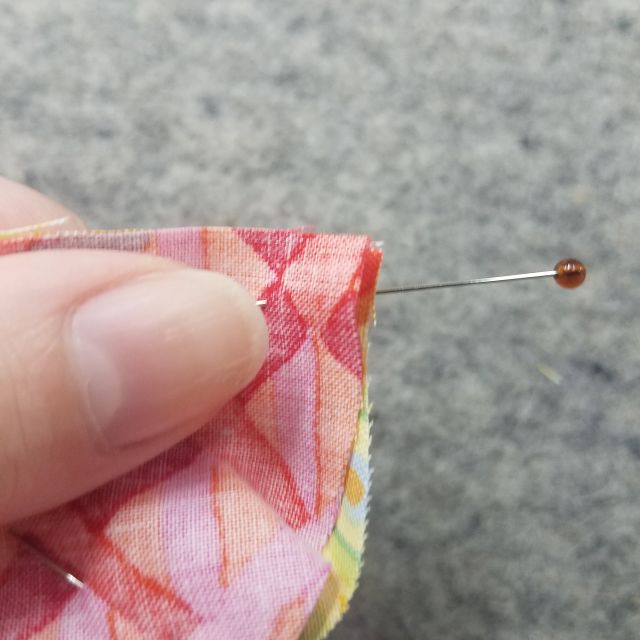
Gently pull at the fabric so the edges of the concave and convex shapes match, pinning as needed.
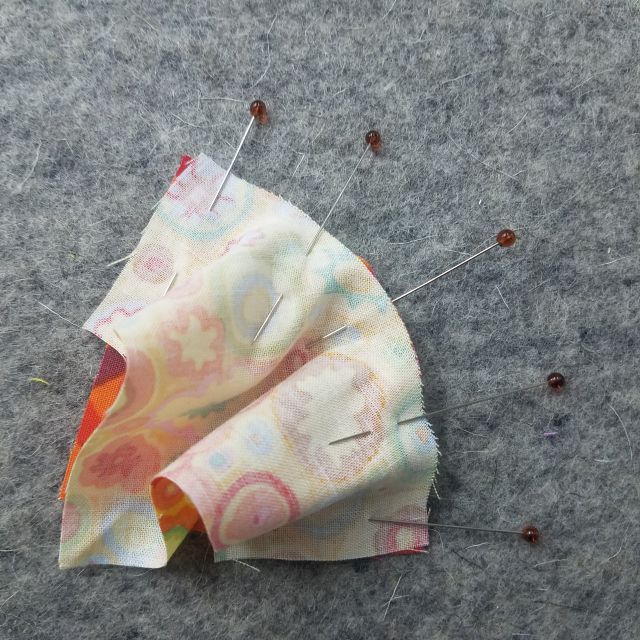
Sew with the convex side down, at a slow speed. It’s helpful to use a quarter inch foot and set the needle to end in the down position, if possible. Remove the pins as you sew.
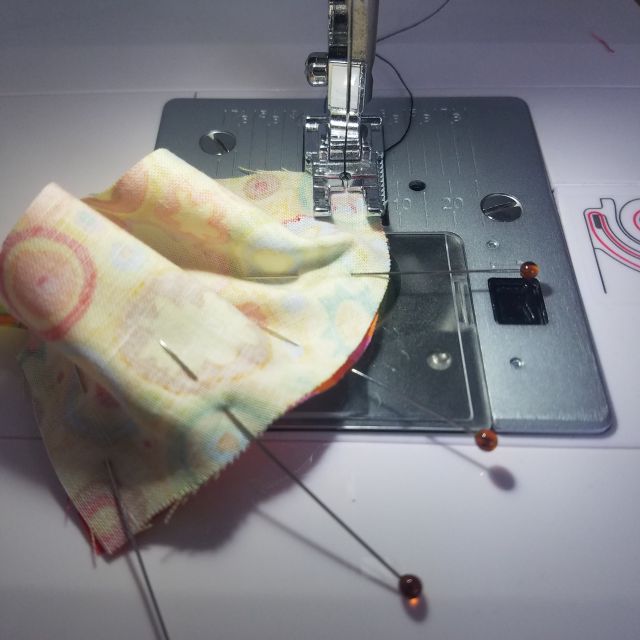
Check the seam allowance and the smoothness of the curve and make any desired corrections now. For this small a unit, I found it helpful to clip the seam. Do what works best for you.
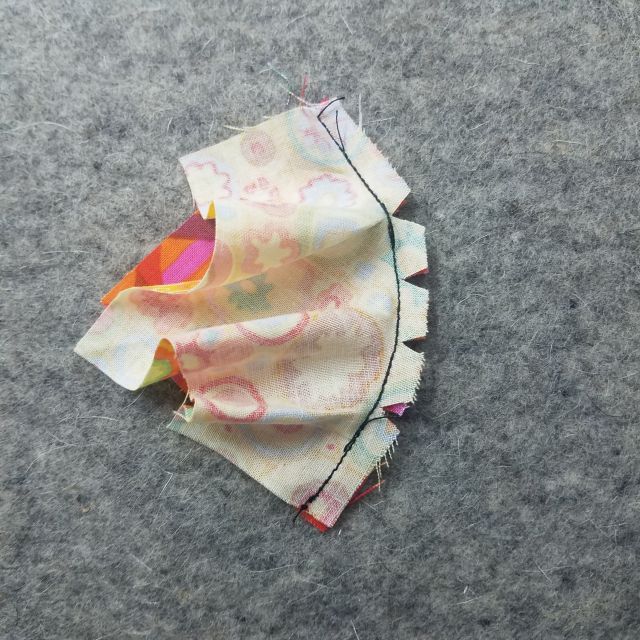
Finger press first to ensure no fabric is left folded into the seam, and then set quickly with an iron. I decided to press towards the convex shape based on how I would like to quilt the block. Press yours as best suits your plan.
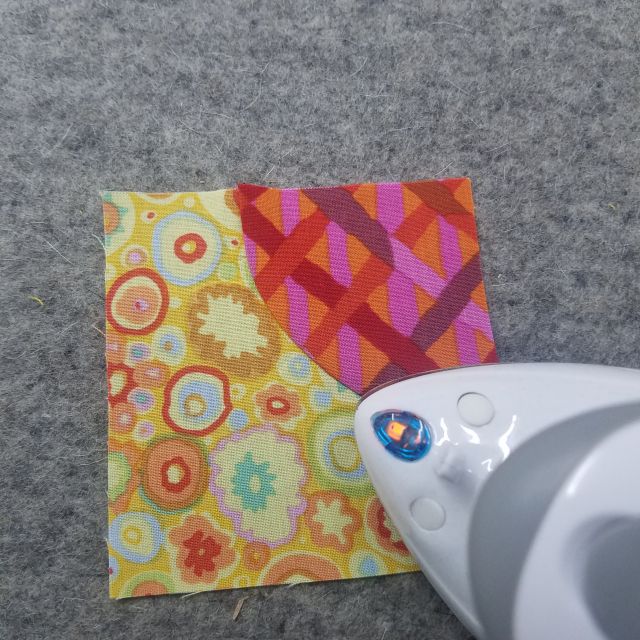

Sew the other concave B piece to the convex A piece to complete a peel unit. The peel unit measures 3 1/2″ x 3 1/2″ unfinished. Make the following peel units:
- (4) Aqua/Gray
- (8) Dark Teal/Gray
- (4) Coral/Gray
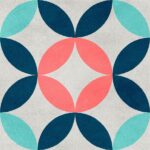
Arrange the peel units and sew in rows, then sew the rows together to complete the block.
By hand:
This block dates back to when all quilt blocks were hand sewn, so the block is actually easier to construct by hand than by machine. Remember not to press until the very end of sewing the block together. This allows for increased accuracy.
Method 2: English Paper Piecing
This hand sewing method allows for accurate, beautiful results. If you enjoy EPP, this method is a great option for making the Orange Peel block.
Print the EPP templates onto sturdy paper like cardstock and cut out on the solid lines. Measure the 1″ square to ensure the page printed the correct size.
Cut out the following:
Gray:
(32) 3 1/2″ x 3 1/2″ – B
Aqua:
(4) 3 3/4″ x 3 3/4″ – A
Dark Teal:
(8) 3 3/4″ x 3 3/4″ – A
Coral:
(4) 3 3/4″ x 3 3/4″ – A
Block Construction
Curves can be English Paper Pieced using the flat back stitch. To brush up on your curved EPP basics, click here. Using the method of your choosing, baste the fabric to the EPP templates. Sew the pieces together to assemble the block.

Method 3: Appliqué
Measure the 1″ square to ensure the page printed the correct size. Create durable templates from the Appliqué printable.
On the wrong side of the fabric, trace the template, and then cut out the pieces.
Cut fabric for the appliqué Orange Peel as follows:
Gray:
(1) 13 1/2″ x 13 1/2″ – Background
Aqua:
(4) 3 3/4″ x 3 3/4″ – Peel template
Dark Teal:
(8) 3 3/4″ x 3 3/4″ – Peel template
Coral:
(4) 3 3/4″ x 3 3/4″ – Peel template
Section Construction
If you would rather applique the concave shapes, either turn under the curved seam allowance using the freezer paper method or trim off the seam allowance and fuse applique.
Prepare the 13 1/2″ square background fabric by marking it in half twice, and then mark a 3″ grid 4×4.

Topstitch the concave shape into the marked squares to complete the block.

Finishing Touches
To prepare the block for quilt-as-you-go, sandwich the 12 1/2″ x 12 1/2″ backing square, 12″ x 12″ batting centered on the backing square, and your block. Baste using preferred method. Quilt as desired inside the 12″ finished size of the block.
Check back later in the month, when we’ll share ideas for quilting the block.
And you’re all set!
Check back next week for some fun variations on the Orange Peel block. You can always find links to all the previous Block 2019 blocks and see when the next installment is coming out in the main Block 2019 article, just click here.
As you finish your blocks, share them in the AQS Project Parade Facebook group, or use the hashtag #Block2019 and tag us @aqsonline because we can’t wait to see what you do!